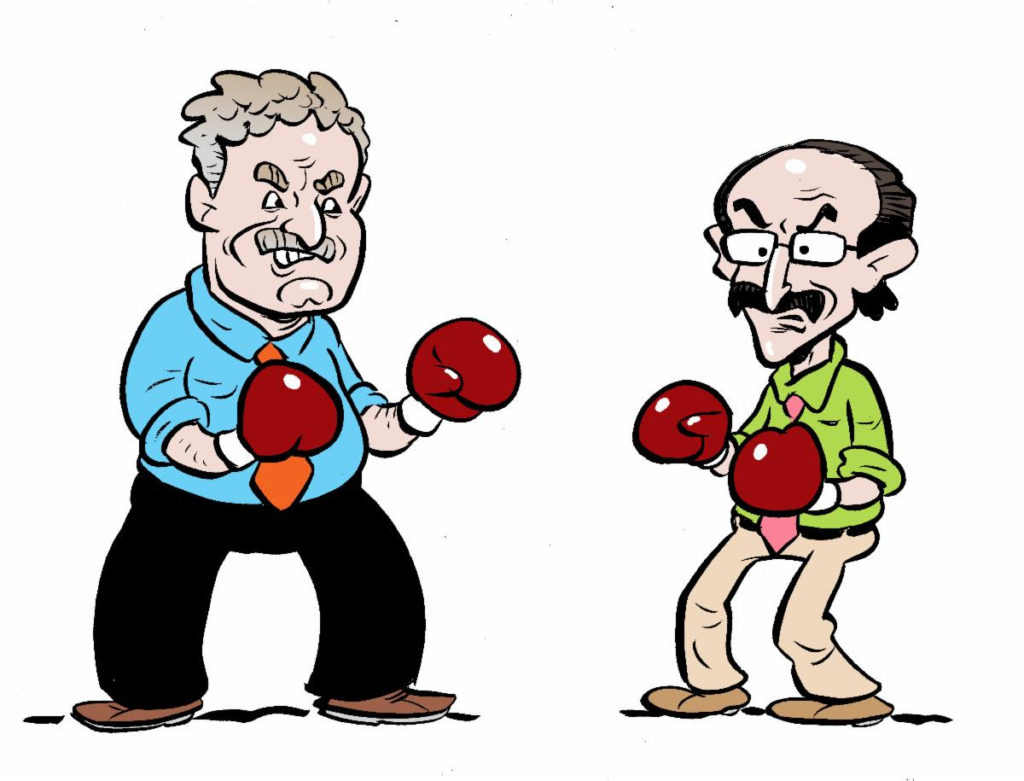|
Getting your Trinity Audio player ready...
|
The idea that the same person who was frantically clicking her TV remote to escape from advertising was going to merrily click her mouse to interact with it is going to go down as one of the great advertising delusions of all time.
Bob Hoffman
BoSacks Speaks Out: I placed my comments below my friend Samir’s musings.

The True Nature Of Magazines… A Mr. Magazine™ Musing…
Digital delivers content; magazines deliver experiences.
In a nutshell, that’s the premise of my blog today.
Magazines are more than content providers; they are experience makers.
No experience can be developed without repetition regardless of whether that repetition is weekly, monthly or even annually. Think of it as a weekday, a month, or a holiday.
Bookazines are not magazines yet they are invading the newsstands… they are paperbacks printed on better quality paper or as one publisher says, “they are the poor man’s hardback books.” Bookazines do not provide repetition, and without repetition there is no habit creation, and without habit creation there are no engaging experiences and without engaging experiences readers never turn into customers, and without customers there is no marketplace.
Magazines have in them a built-in expected pleasant surprise that is based on continuity and change. Readers/customers are always looking for that surprise in the midst of the familiarity of the nature of the magazine… they know there will be a diet article or a cooking feature, but the surprise is in what is the diet this time or what is the meal plan in this issue? An expected surprise…
As you know, it’s my postulate, if it is not ink on paper; it is not a magazine. Magazines are in your face, no need to search for them or Google them. You can see them at the newsstands or you can invite them to your home. Like a trusted friend they will visit you issue in and issue out. There are no interruption or pop-up notifications, guaranteed.
Even the original definition of the word magazine (from the Arabic or French word Maghzen) means a place where goods and supplies are stored: a warehouse. The store rarely changes its physical appearance but always changes the goods inside the store. However, the goods are kept in areas where repeat customers can easily locate the goods they need. The same is true with the magazine. The readers can easily locate the regular departments, their favorite columnist, and always be surprised by the ever-changing yet constant themed content regardless of the subject matter.
In fact, some magazines are like an apartment building and others are like a mansion. One can actually count the apartments in the building or the rooms in the mansion. Everything is quantifiable. The size, the width, the depth, all the dimensions are there. You see the front door and you see the backdoor. You enter the first floor and you can move up to the top floor. It is one complete beautifully designed building or one gorgeous mansion. You move from floor to floor or from room to room without ever leaving the building or the mansion. Everything in it is connected like a perfectly done jigsaw puzzle, some are 100 pieces and others are 1,000 pieces. Digital is more like a maze. You enter at your own risk and you hope to find the right exit without being caught in its web (pun intended).
The content and the ads reside in the same real estate without feeling out of place. They complement each other to create one experience for the customer. Unlike digital, the ads in a magazine relate to the topic and nature of the magazine. Unlike digital, you will not find an ad about dog food in a food magazine or vice versa. The majority of the ads in magazines are endemic to the content of the magazine, and unlike digital the ads are not foreign to the content matter that one is reading on the digital devices. Ads in magazines are part of the experience; ads in digital are an eyesore. The ads on digital devices don’t add anything to the experience or to the content matter. They are only after you and your data.
To put it bluntly, ads in magazines are like inviting friends and their friends to your house; ads in digital are like a thief invading your house when you least expect it.
And lest we forget, you can actually own the magazine, show the magazine, and display the magazine since it is a physical entity. As for digital, even if you pay for it, you own nothing, and you can show nothing, all that you’ve paid for is in a virtual world. The magazine is private and is yours. You can hide it or display it, you can toss it or collect it, and you can share it or recycle it. In short, it is yours and you can do whatever you want with it.
So, what are you still waiting for? Head to a newsstand or bookstore, pick up a magazine or two, and come back home and lose yourself in an experience any other medium can provide. Happy experience making…
Until next time…
Samir “Mr. Magazine™” Husni, Ph.D.
President and CEO, Magazine Consulting & Research, Inc.

BoSacks Speaks Out: There is a lot to unpack here.
There are things that I agree with and things that I don’t. The concept that “Digital delivers content; magazines deliver experiences,” misses much of the experiences of the digital format. There are experiences everywhere on the internet. TikTok, Fortnight, Facebook, Pinterest, Snapchat, ESPN Fantasy Football, YouTube, just to name a few. The list of emotional experiences in a digital platform is endless.
My next bone of contention is that Bookazines are not magazines. I would suggest that the distinction does not matter. Bookazines are the hottest selling product by magazine publishers internationally. To me, all they really are are quality magazines. Better paper, better graphics, better editorial, and usually on a single subject. The truth is if it isn’t a magazine, who cares? The bottom line is they sell well and are sold in pockets made for magazines by publishers. The keyword here for an industry in stasis is, they sell well.
Where I agree is with his assessment of digital advertising and I will even go a step further. Digital advertising is a cesspool of profiteers, tricksters, and frauds. When it comes to advertising tracking Bob Hoffman nailed it when he said, “Tracking: When did the convenience of marketers become more important than the privacy rights of individuals and the integrity of democratic institutions?”
Samir didn’t mention this, but printed magazines are the most trusted media platform. More trusted than TV, radio, or newspapers. Yet the marketers of the world dismiss print as old and traditional. Old, traditional, and trusted is why they work.
I’ll close by paraphrasing Bob Hoffman. There’s no bigger sucker than a gullible marketer convinced they’re missing a trend.
Bo Sacks
President, Precision Media Group
This commentary originally appeared on Bo Sacks daily newsletter and is re-published with kind permission. You can subscribe to Bo’s e-newsletter here.


